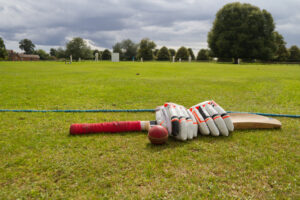1. Introduction
Cricket is more than a game for India. Fans of the Indian national cricket team are not a group of players; they comprise one billion fans. Generations have lived feeling pain, glory, and unforgettable memories through the team’s successes and failures. Cricket is celebrated in the hallways, alleyways, beer halls, and cricket fields of India’s geographically diverse population. This blog is a record of everything: every year, every player and every team with a captain, true records from the year 2025.

2. Origins & Early Era
The British East India Company brought cricket to India in the 18th century with the first recorded game in 1721. By 1792 there was a Calcutta Cricket Club. An all-Indian team, lead by the Maharaja of Patiala, toured England in 1911.
Having been given full membership of the Imperial Cricket Conference (now ICC) in 1926, India played her first official Test match on June 25, 1932, against England at Lord’s, with CK Nayudu as the captain. That is counted as a loss for India, but it was the beginning of a cricket giant.
3. Establishment & First Triumphs
Another one also speaks about the greater importance of the first Test victory that India achieved over England in 1952 in Chennai at the M.A. Chidambaram Stadium. The result of that Test laid down the foundation upon which the next generation of cricketers grew. It was in the 1970s that India came into being as the spark for the spin quartet of Bedi, Prasanna, Chandrasekhar, and Venkataraghavan, with Sunil Gavaskar and Gundappa Viswanath quietly staking a claim on the batting front.
But after that is the great watershed of 1983. India, Royally led by the much-esteemed Kapil Dev, won the World Cup finals at Lord’s against West Indies, setting off enormous noise in the world of cricket. This sole win contributed even further to the famous love affair the Indian population had with cricket.
4. Golden Years: 1990s to 2000s
Icons like Tendulkar, Ganguly, Dravid, Kumble, and Laxman originated in 1990s India. The very aggressive captaincy of Ganguly brought overseas performances back to the limelight.
Very much years later, India began to scale much greater heights under Dhoni as the captain. They gained the International T20 World Cup in 2007, the international 50-over World Cup in 2011, and the Champions Trophy in 2013. It was under the leadership of MS Dhoni that coolness under pressure and finishing skills gained global respect.
5. Modern Era of Indian Cricket
In recent times, there have apparent successes, such as winning the T20 World Cup in 2024 and the ICC Champions Trophy in 2025. Rohit Sharma was captain for Test matches and ODIs, while Suryakumar Yadav was captain of the T20 cricket team.
India then commenced a tour of England in June 2025. Shubman Gill was captaining the Test team for the first time. Gill scored 127* and Yashasvi Jaiswal scored 101 as India reached a position of 359/3 at the end of Day 1 of the first Test, although debutant Sai Sudharsan was out for a duck.
6. Records & Statistics
- Most Runs (Tests): Sachin Tendulkar (15,921)
- Most Wickets (Tests): Anil Kumble (619)
- Fastest Century: Virat Kohli in 52 balls
- ODI Double Centuries: Rohit Sharma (3 times)
These numbers prove India’s depth in talent and commitment.
7. Iconic Players Spotlight
- Sachin Tendulkar: God of Cricket. Played 200 Tests.
- Kapil Dev: 1983 WC hero. Fast-bowling all-rounder.
- MS Dhoni: Captain Cool. Master finisher.
- Virat Kohli: Aggression and consistency.
- Shubman Gill: New-age leader with a calm mind.
Each of them played a crucial role in shaping India’s cricketing image.
8. Current Developments (2025)
India is on tour in England, and the team just honored cricket legend James Anderson and unveiled the Tendulkar-Anderson trophy. Headcoach Gautam Gambhir has added some discipline to the team, with stories like Kuldeep Yadav taking Rohit’s seat showing leadership has been flipped upside down. The last test match featured Kohli and Anushka Sharma, and they were seen supporting the team and seated in London.
9. Future Outlook
India’s bench strength looks healthy. In the bowling department, young seamers like Mukesh Kumar and spin-pairing Ravi Bishnoi are itching to take their opportunities. With Gill, Jaiswal and Pant front-lining the batting, the future looks promising.
The next WTC cycle, World Cup in 2027 and T20 World Cup in 2026 are important targets. We’ll look at developing team cohesion and managing player fitness level.
10. Conclusion
India’s rise from colonial subservience to cricket superpower is astonishing. With each match that India plays, with every ball that is bowled, the journey continues. Cricket fan now look forward to Shubman Gill to further the legacy. India’s cricket story is far from over: It is just beginning.



0 Comments